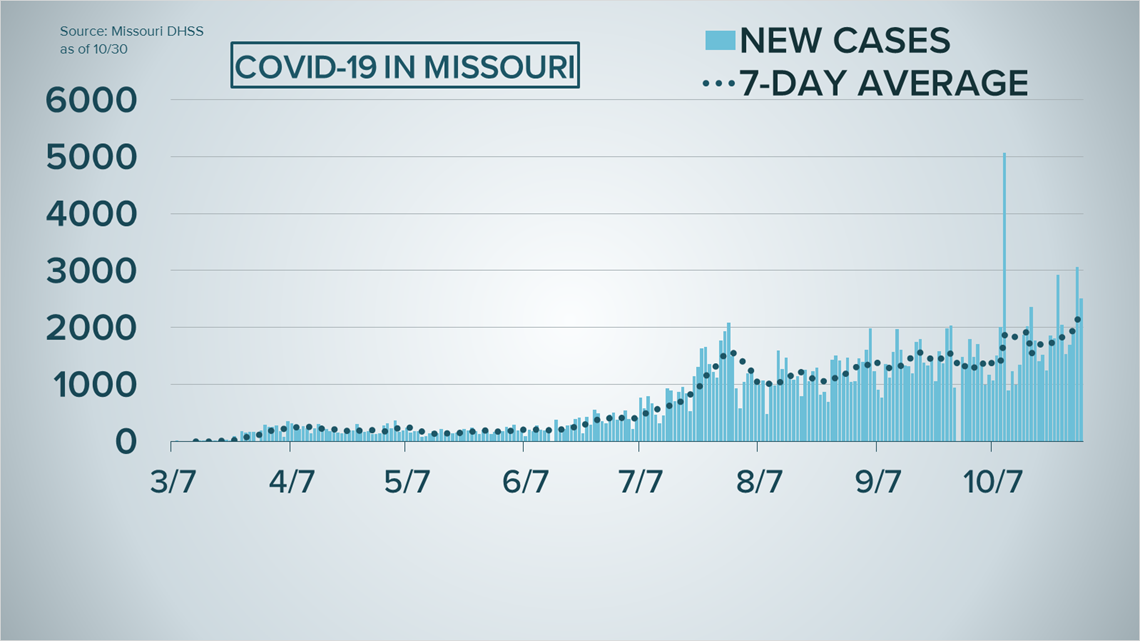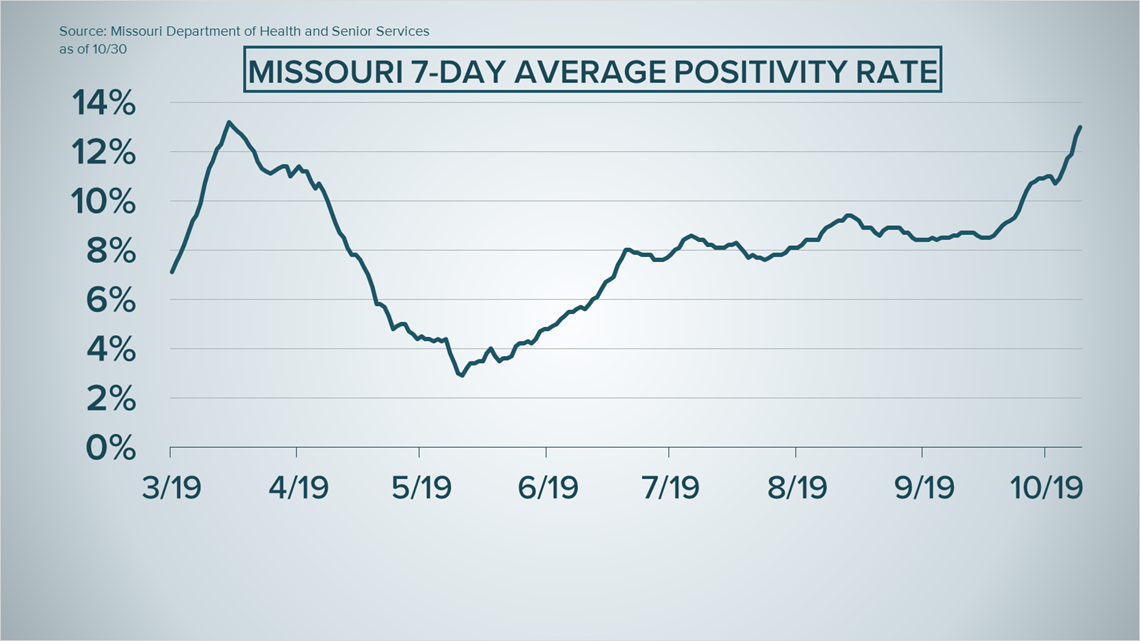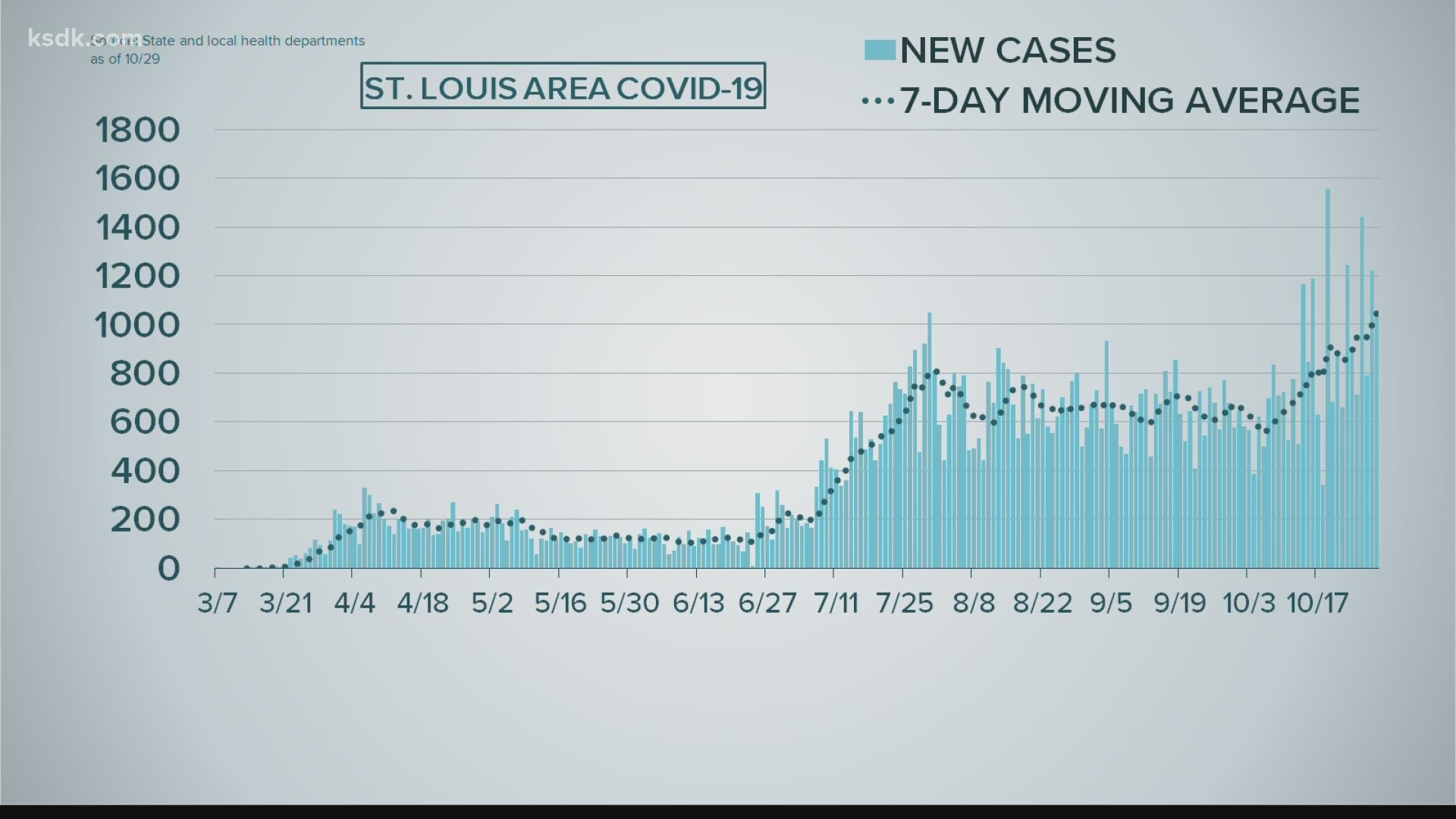ST. LOUIS — The leader of the St. Louis Metropolitan Pandemic Task Force said the St. Louis area is running out of time to limit the spread of the coronavirus before hospitals in the area become overwhelmed.
"Our numbers are really alarming, and the window of opportunity to turn the tide is rapidly closing," task force commander Dr. Alex Garza said in a Friday afternoon briefing. "With each passing day, it gets harder and harder to imagine a path where the health care systems will not become overwhelmed."
Dr. Garza said there has been a "steady and significant" increase in all of the numbers the task force is tracking.
"The only up-and-down that's occurring is how high is it going to go the next day," Dr. Garza said when asked if there was a trend in COVID-19 data.
Those increases on Friday included 62 new admissions and a total of 422 hospitalized patients currently in task force hospitals. The seven-day average of new admissions increased to 59 on Friday, tying the highest number during the pandemic.
Dr. Garza said St. Louis area hospitals are nearing 90% capacity as COVID-19 cases rise. These numbers differ slightly from the numbers reported for the region by the Missouri Department of Health and Senior Services dashboard.
Dr. Garza said the difference is because the state health department uses the number of beds possible inside the facility while the task force is using the number of beds they can have staffed for treatment.
"The numbers that we use is based off the staffing capacity for those beds," Dr. Garza said. "So, as I mentioned on Monday, it doesn't really matter if we have 100 beds. If I only have staff for 10, then — realistically — I only have 10 beds."
He said they are working with the state to update the capacity numbers to more accurately reflect the reality of hospital capacity.
Dr. Garza said the task force hospitals are starting to see more patients from St. Louis and St. Louis County after the two most densely populated areas limited COVID-19 transmission for months.
"Now, in addition to admissions coming from those outlying areas, we are starting to see that increase coming from the city and county, because there's so much virus going on," Dr. Garza said.
Dr. Garza said the best way for the region to slow the spread of COVID-19 is to avoid gatherings and to wear a mask any time social distancing isn't possible.
He said it will be vital for people to follow those suggestions this week as people prepare to celebrate Halloween and head to the polls on Election Day.
"You can do all of those things and still have a close-to-traditional Halloween," Dr. Garza said of following COVID-19 guidelines this weekend. "Now, things that you can't do are have Halloween parties, things that you can't do are even travel around the neighborhood in packs, particularly the adults."
He encouraged parents, children and neighbors to get creative to have a close-to-normal Halloween.
The numbers reported by the task force Friday are as follows:
- New hospital admissions (data lagged two days) increased – from 54* yesterday to 65 today.
- The seven-day moving average of hospital admissions (data lagged two days) increased from 56 yesterday to 59 today.
- The seven-day moving average of hospitalizations increased – from 379 yesterday to 389 today.
- Inpatient confirmed COVID positive hospitalizations increased – from 412 yesterday to 422 today.
- Inpatient suspected COVID positive hospitalizations increased – from 84 yesterday to 93 today.
- The number of confirmed COVID positive patients in the ICUs increased – from 96 yesterday to 104 today.
- The number of confirmed COVID positive patients on ventilators increased – from 50 yesterday to 57 today.
- Across the system hospitals, 57 COVID-19 patients were discharged yesterday, bringing the cumulative number of COVID-19 patients discharged to 7,714.
*The hospital admissions data for Thursday increased from 52 to 54, changing the seven-day moving average to 56. We apologize for any issues this may cause.
The briefing comes at the end of a week that saw a record number of new hospitalizations on Wednesday and single-day records for new cases in Missouri and Illinois.
Illinois reported a record number of new cases for the second day in a row Friday.
The state's health department reported 402,401 COVID-19 cases and 9,711 deaths as of Friday, a single-day increase of 6,943 cases and 36 deaths.
The state also reported 95,111 new tests, a record number of tests on a single day that did not include a backlog of data.
Over the last week, the percentage increase of new cases has outpaced the percentage increase in testing, resulting in an increasing positivity rate.



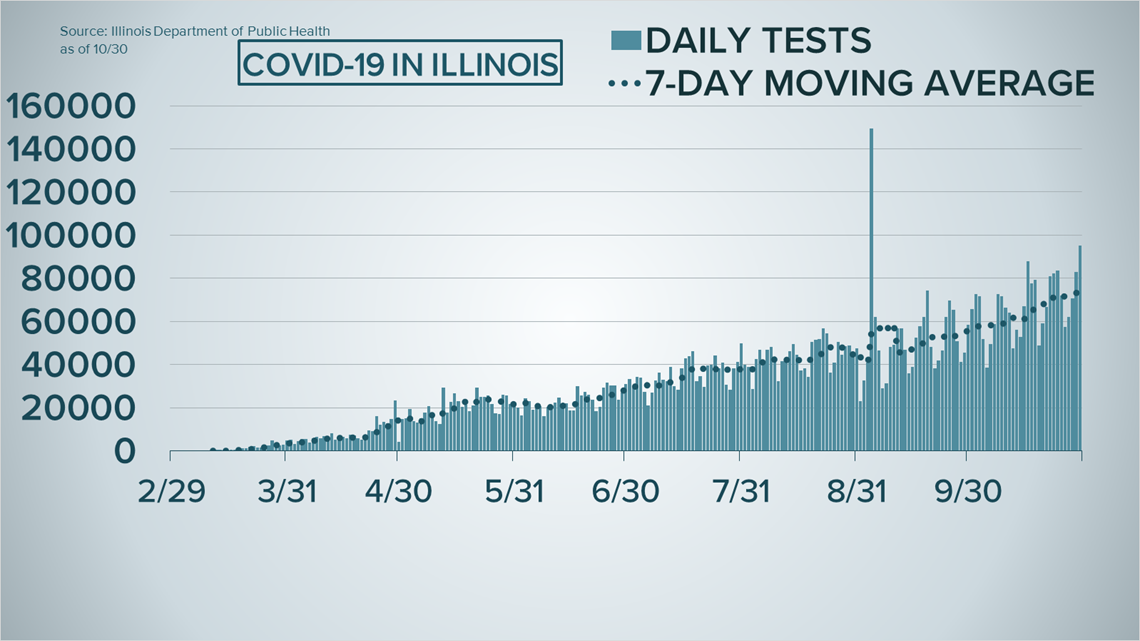

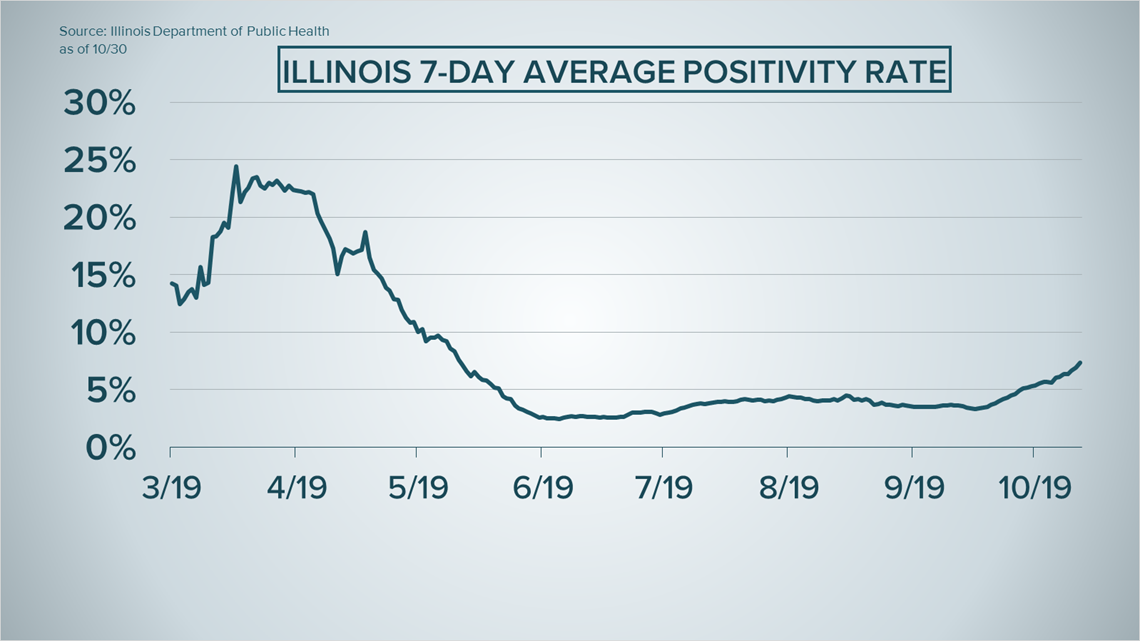
The seven-day positivity rate for the Metro East increased from 8.5% to 8.7%.
More stringent mitigation measures were put in place for the region earlier this week.

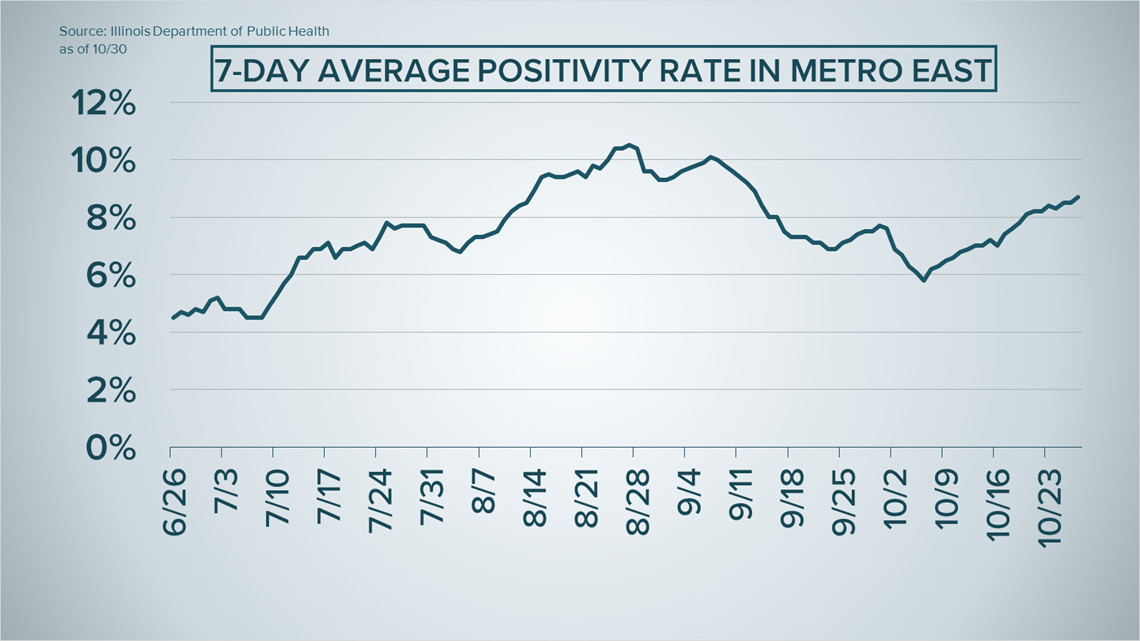
In Missouri, the health department reported more than 2,500 cases in a single day for the third time during the pandemic.
The state reported 180,200 cases and 2,925 deaths as of Friday, a single-day increase of 2,507 cases and 26 deaths.
The state set a record for the highest number of new cases for a day Thursday with 3,061. The state reported more than 5,000 cases on Oct. 10, but the health department said that was due to a data entry error.
According to the dashboard, the state's seven-day average positivity as calculated by the CDC method is 13.0%, the highest the state has reported since April. The CDC method is calculated by taking the number of positive PCR tests in the past 7 days divided by the total number of PCR tests in the past 7 days.

